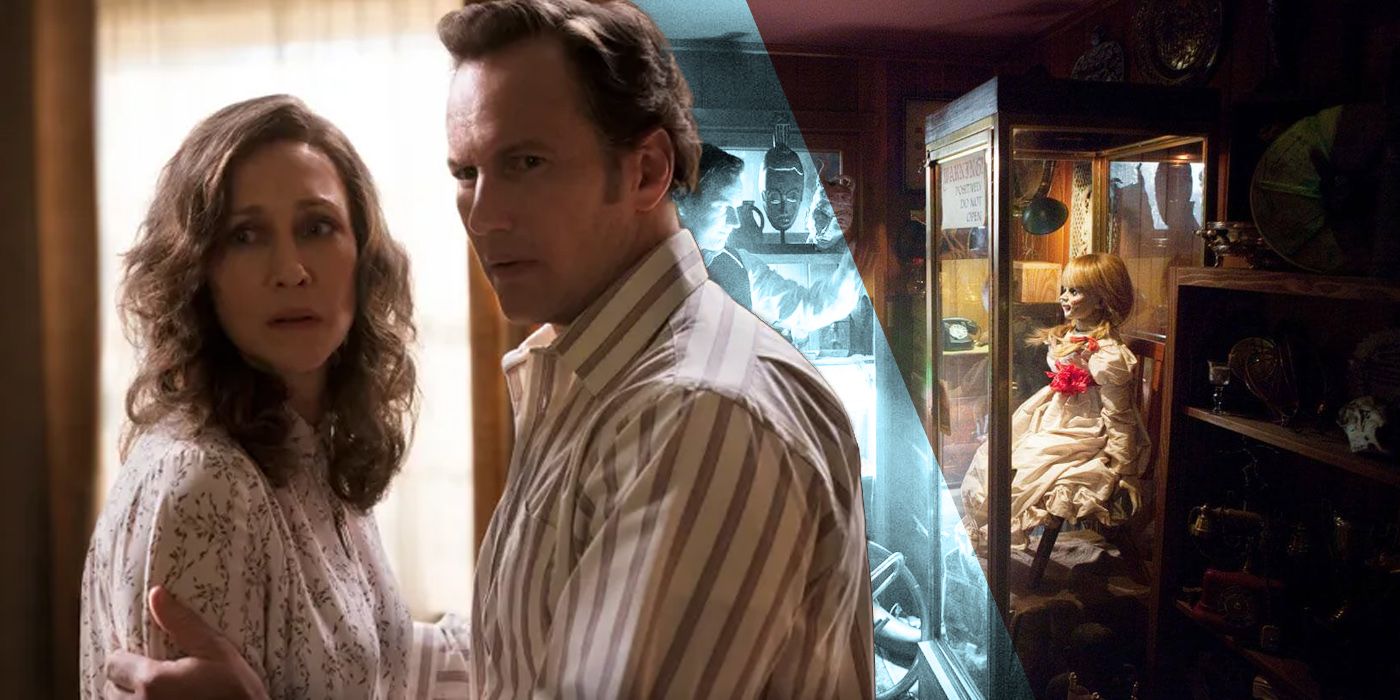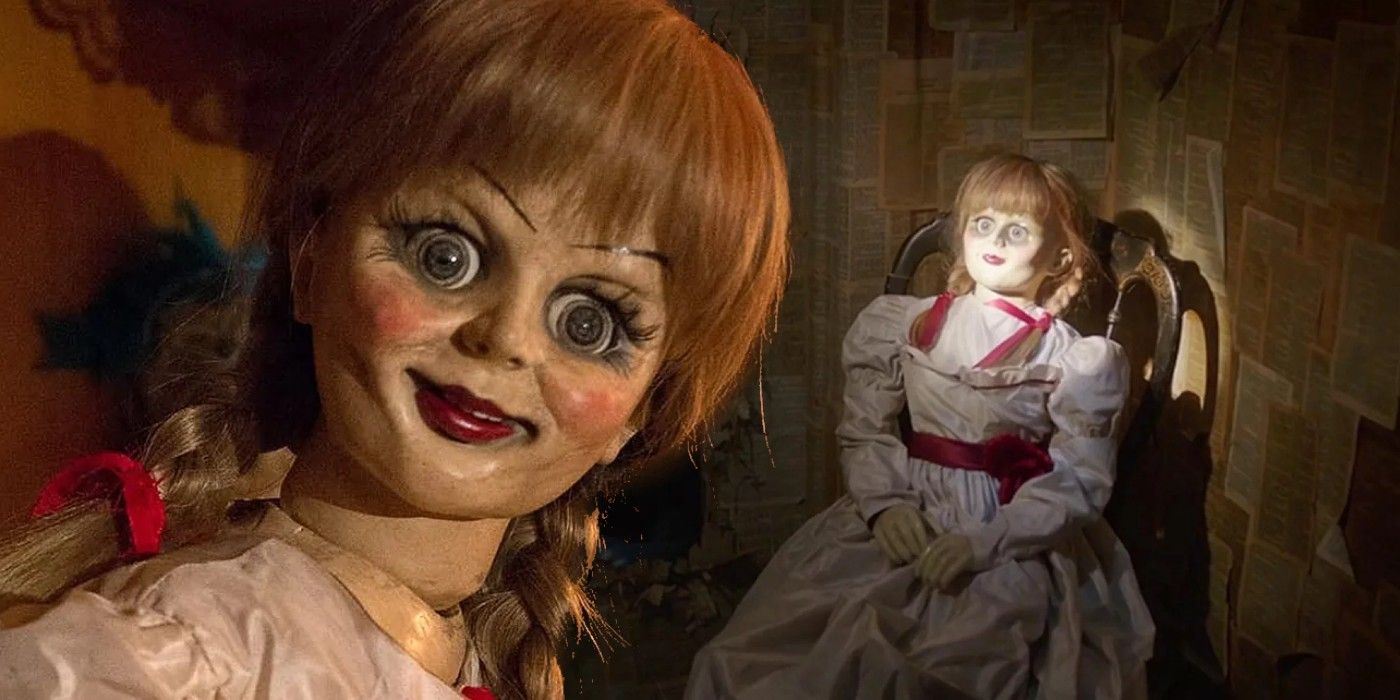Over the course of three Conjuring films amidst a sea of spin-offs, the big screen versions of Ed and Lorraine Warren have added various artifacts to their occult museum, with the most recent film seeing some familiar sights on its shelves. 2021’s The Conjuring: The Devil Made Me Do It presents the latest tale of supernatural horror in the Conjuring Universe, which sees Ed and Lorraine Warren (Patrick Wilson and Vera Farmiga) investigate a murder suspect claiming demonic possession. The film is loosely based on the real life 1981 murder trial of Arne Cheyenne Johnson, the very first to claim innocence by way of such possession. While Johnson would eventually be convicted of the lesser charge of manslaughter, the trial would have long-lasting effects on both the American legal system and pop culture at large.
The end of the first Conjuring film in 2013 sees Ed Warren add a haunted music box to a room filled with other, presumably haunted, artifacts. This room is inspired by the real life Warrens’ actual Occult Museum in Connecticut, which is similarly filled with items they’ve collected over the course of many demonological investigations. In the films, the room is filled with items that both reference the Warrens’ real experiences, as well as the fictional items at the heart of the movies. It’s these physical totems that present the biggest link between the Conjuring films and its spin-offs, and the end of The Conjuring: The Devil Made Me Do It adds one more artifact to the Warrens’ haunted shelves.
After Ed destroys Isla’s altar, breaking her attempted curse and resulting in her death at the hands of the very demon she was controlling, he brings home the cup that rested atop the altar. While the focus is on Ed placing the cup on the Warrens’ iconic shelves, it’s hard to miss what’s staring at the audience in the background: the painting of Valak the nun that memorably sprang to life and attacked Lorraine in The Conjuring 2. Also present, as always, is the Annabelle doll from the original Conjuring film, as well as the Annabelle films.
The physical items around which the films revolve are a significant part of what makes the Conjuring Universe so memorable, and why the Warrens’ occult museum is such an iconic location in canon. With a simple lingering shot of something that might otherwise just be a prop, the filmmakers are able to immediately connect audiences with previous films, reminding them of exactly what’s happened in the past without having to rely on ham-fisted expositional dumps. At the same time, the real-life items on the Warrens’ shelves link the films with their real-world counterparts, providing a deeper air of authenticity to the setting.
The Conjuring films are harrowing tales of supernatural horror, and while not everyone believes in the supernatural, the films are grounded by the various tangible totems that are possessed in them. With additional sequels planned based on The Conjuring 2’s “Crooked Man” as well as Valak the nun, there are surely more artifacts to be added to the Warrens’ shelves.


